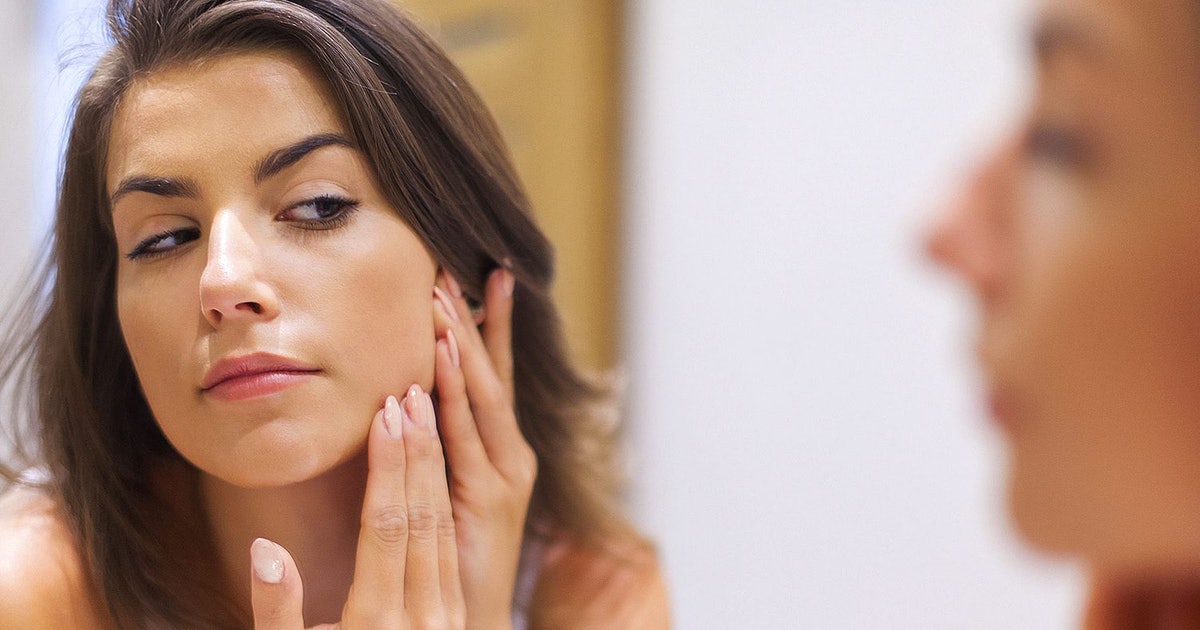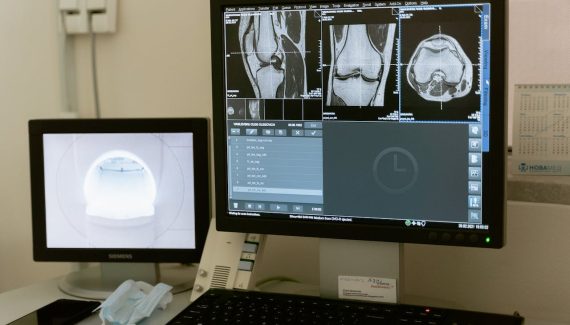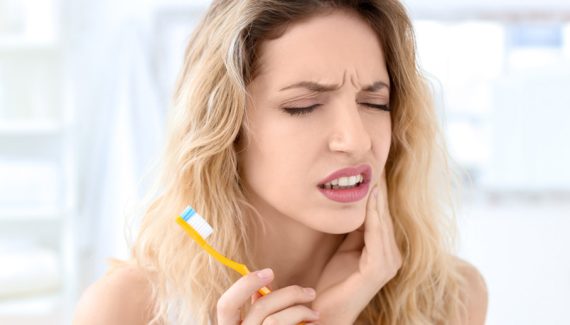Sebaceous cysts are almost as enticing to pop as pimples but resist the urge. Your risk of inflammation, infection, and discomfort could rise if you pop a sebaceous cyst or a skin cyst at home on your own. With just your fingers, the majority of cysts are almost tough to remove. Additionally, you can transmit bacteria and sebum well below the hair follicles, which will cause the substances to spread and produce new cysts. Scarring is also more likely to occur if you pick at your skin.
In essence, your dermatologist would be better off removing the cyst.

Image Credits: scarymommy
Contents
What is a Sebaceous Cyst?
Sebaceous cysts are under-the-skin lumps that have calcified and are filled with fluid or pus. They can range in size from being quite small (about pea-sized) to 5 centimeters across. They frequently don’t hurt and typically take the form of a yellow or white lump on your skin. They can appear anywhere on the body and are not malignant, also pose no threat to life, but many people find them ugly and irritating, particularly if they rub against clothing.
These sebaceous cysts are not pimples, despite the fact that you likely want to get rid of what appears to be a large pimple as quickly as possible. In contrast to a pimple, which is at the skin’s surface, they are located beneath the skin’s surface. Keratin is stuck close to a hair follicle or in a clogged skin duct beneath the skin, which results in cysts. The issue with attempting to pop a sebaceous cyst is that it will probably refill because sebaceous cysts have a whole wall. It won’t return if this sac-like wall is removed. Additionally, if the wound created by a DIY sebaceous cyst excision needs stitches to seal, which is usually the case barring cysts smaller than a pinhead, it may be unpleasant and cause an infection. The fluid that is produced by the cyst may also have a bad odor.
See Also: How to Dissolve Sebaceous Cyst Naturally
Why You Shouldn’t Try to Remove Sebaceous Cyst at Home
Cysts with inclusions include sebaceous and epidermoid cysts. This indicates that the cyst is enclosed in a capsule. It’s conceivable that the cyst will recur if the capsule or cell wall isn’t completely removed. Additionally, after an attempted partial removal or rupture, the cell wall usually grows back thicker, making the cyst more challenging to remove later on. You run a higher risk of scarring if you remove the cyst at home. To lessen this possibility, doctors will employ specialized methods. The chance of infection is an additional factor. Attempting to remove the cyst at home can increase your vulnerability to infections. But doctors use sterile equipment and clean procedures to prevent them.
Medical Treatment for Sebaceous Cysts
The region will be examined by your dermatologist to determine whether it is a cyst or another kind of skin problem. If your dermatologist decides that surgical excision of the cyst is necessary, they will remove the entire cyst, including the cyst wall. Your dermatologist may advise you to wait for at least 4 weeks for the inflammation to subside if the cyst is really inflammatory.
Your doctor may follow one or more of the following procedures if the cyst does not get cured on its own:
Steroid or Cortisone Shot:
Using a tiny needle and a corticosteroid injection, a doctor will treat the cyst or its vicinity with anti-inflammatory medication. The operation is fairly rapid, and most people report just minor discomfort. The lump should become smaller after the injection.
Medications:
A person may benefit from using prescription drugs like antibiotics when inflammation is acute. A doctor might prescribe an antibiotic if a cyst exhibits symptoms of inflammation. In most cases, a person finishes the antibiotic course in 1-2 weeks.
Excision Through Surgery:
The best treatment for cysts like epidermoid cysts is a simple surgical procedure called excision. The most successful therapy, known as excision, entails removing the entire cyst. When a cyst shows symptoms of infection and inflammation, a doctor will often not remove it. Before removing the cyst, they often give the irritation a minimum of 4-6 weeks.
See Also: Botox Vs Fillers: Here’s Everything You Need to Know
Home Remedies for Such Cysts
Try natural therapies that let the substance trapped in the blocked pore leave rather than trying to squeeze a cyst open.
Cleansing:
While you’re attempting to get rid of a cyst, it’s crucial to continue with your regular cleansing regimen. This entails bathing every day. Additionally, you might think about carefully bathing the cyst by itself up to three times each day. Also, when you wash, avoid scrubbing the cyst. This can aggravate the inflammation and cause it to spread. You consequently also increase the cyst’s visibility. When cleaning the specific region, use soft, circular strokes. Especially if you’re using a cleanser that exfoliates.
Warm Compress:
Apply a warm compress to the region once the area around the cyst has been thoroughly cleaned. Without needing to pop the cyst, the trapped substance is encouraged to exit the hair follicle by the warmth and wetness. For the same effects, a warm, soft washcloth with moisture is also an option. Until the cyst drains, you may employ this procedure up to three times daily for five to ten minutes at a time.
Ice to Reduce Swelling:
A cyst typically causes more visual discomfort than actual pain. But these cysts might swell up. If you keep picking or scratching at the cyst, you run a greater risk. An inflammatory cyst will exhibit redness and swelling. The cyst could possibly get bigger. Treating the inflammation with ice is a good option. Ice can assist lessen redness and swelling while warmth aids in the removal of items that have become trapped in the hair follicle. The cyst’s size and overall appearance could therefore shrink. Ice can also ease any soreness that might develop.
When to See a Doctor
After a few weeks of self-care, if a cyst isn’t getting better, it might be time to see your dermatologist. Additionally, some cysts are too deep to be removed at home. Besides this, if you suffer from any of the signs and symptoms such as redness, swelling, or pain because of a sebaceous cyst, you should consult with a doctor. These signs could mean that your cyst is infected and needs to be treated. Keep in mind to resist the urge to manipulate or squeeze the cyst. Follow your doctor’s recommendations to keep the area dry and clean after having a sebaceous cyst removed. Also, call your doctor right away if you are experiencing symptoms of an infection.
FAQs
Q. How common are sebaceous cysts?
Ans. Compared to other forms of comparable cysts, such as epidermoid cysts and pilar cysts, sebaceous cysts are much less frequent.
Q. Are sebaceous cysts painful?
Ans. The majority of the time, sebaceous cysts are painless, but if they become infected, they may become sensitive, sore, and red. Unpleasant-smelling drainage leaking out of the cyst or redness and swelling around the cyst are two indicators of infection. If you experience such symptoms, consult with your doctor.
Q. What are the few symptoms of sebaceous cysts?
Ans. A little bump under the skin is a sebaceous cyst’s primary symptom. Generally, the lump doesn’t hurt. Cysts, however, can occasionally swell up and feel sensitive to the touch. If the cyst is inflamed, the skin around it may be red and/or heated.
Q. What happens when you break a cyst?
Ans. A pelvic infection can cause cysts to form (called an abscess). Sepsis, a potentially fatal immunological reaction to dangerous bacteria, may be brought on by the rupture of an infected cyst. Antibiotics are administered to infected cyst-bearing female patients, and cyst drainage surgery may occasionally necessitate hospitalization.
Conclusion
An enclosed tissue pocket known as a cyst can contain fluid, air, pus, or other substances. Any tissue in the body can develop cysts, and the majority are benign (benign). They might be surgically removed or drained, depending on their kind and location. You might be able to safely remove the cyst using home remedies without running the danger of infection or scarring. But if you get symptoms of an infection, such as increasing redness, pus, or discomfort, you should visit your doctor. To help you permanently get rid of your cyst, your dermatologist might remove the cyst or suggest antibiotics or retinoids.
Related Posts:


